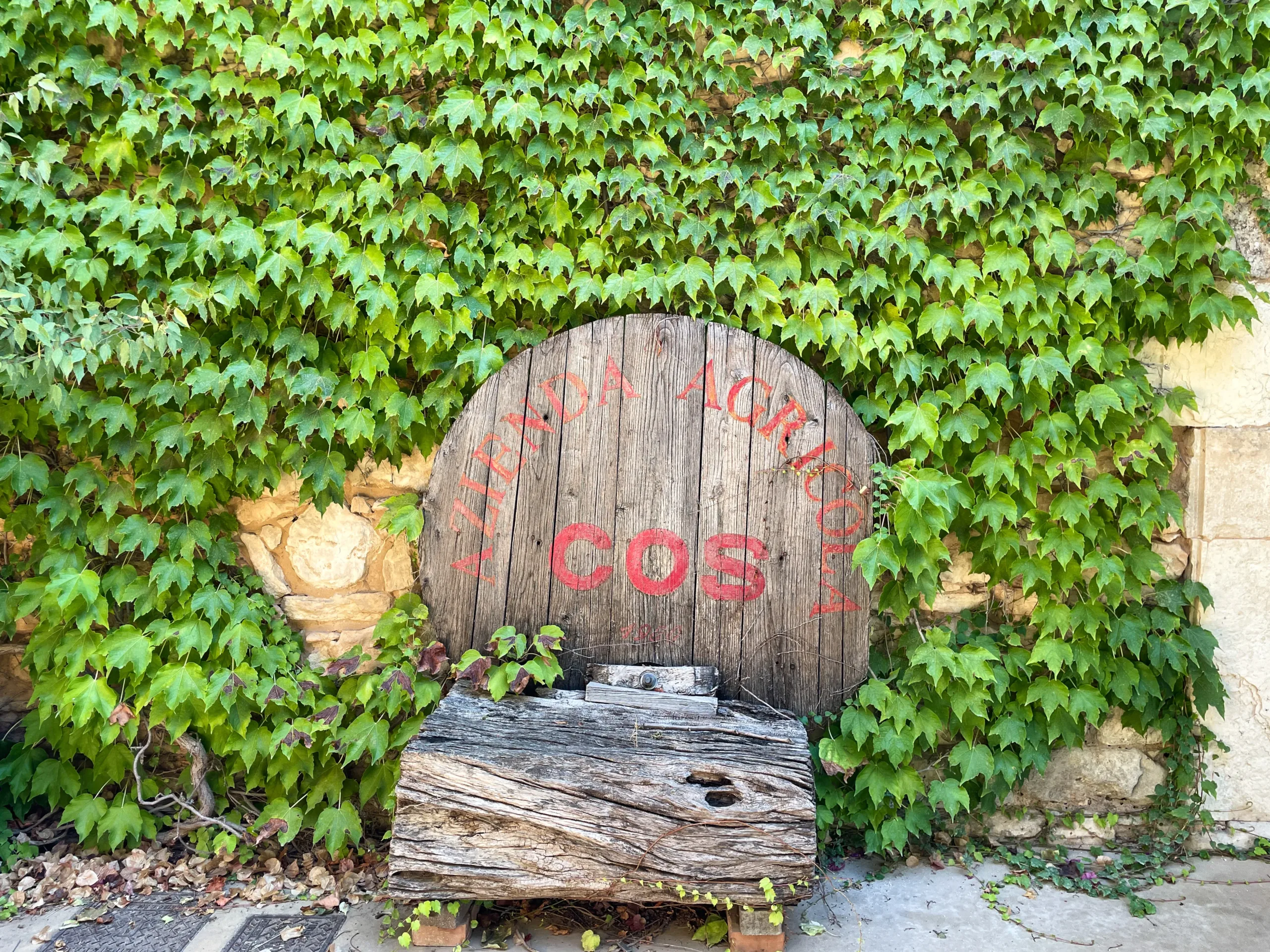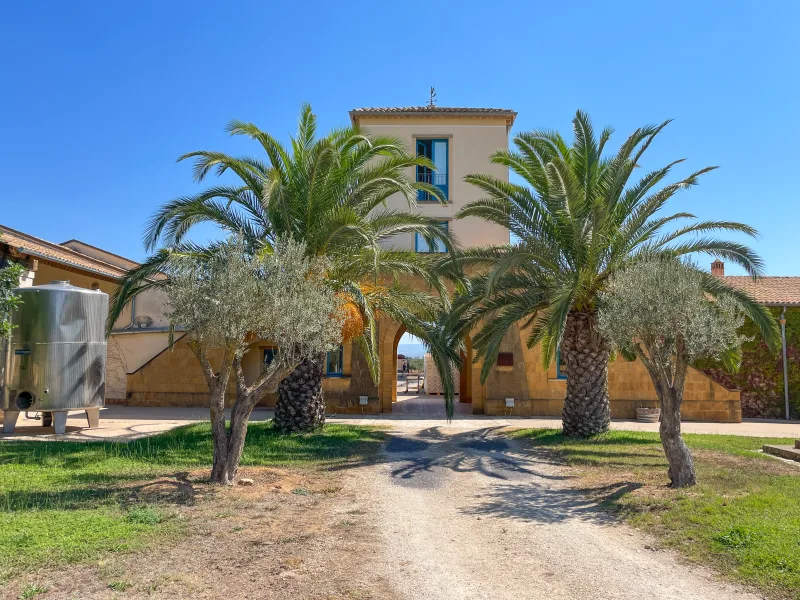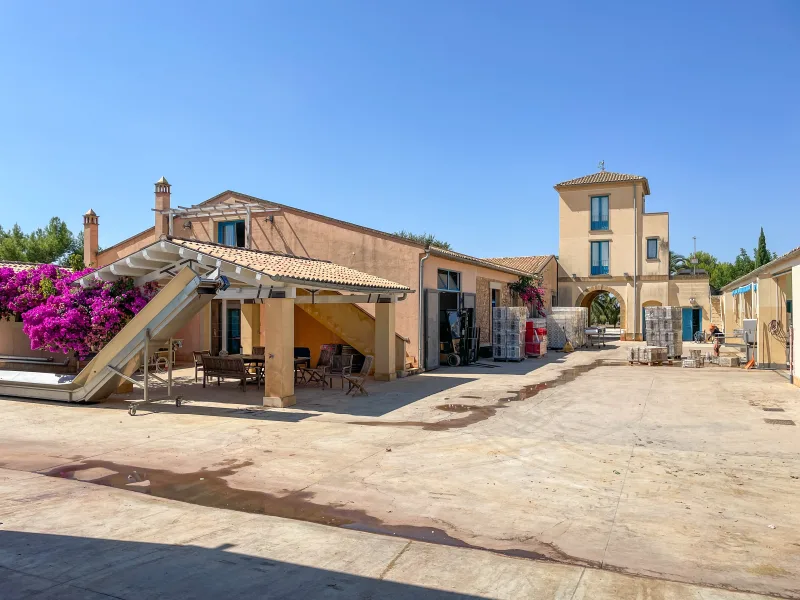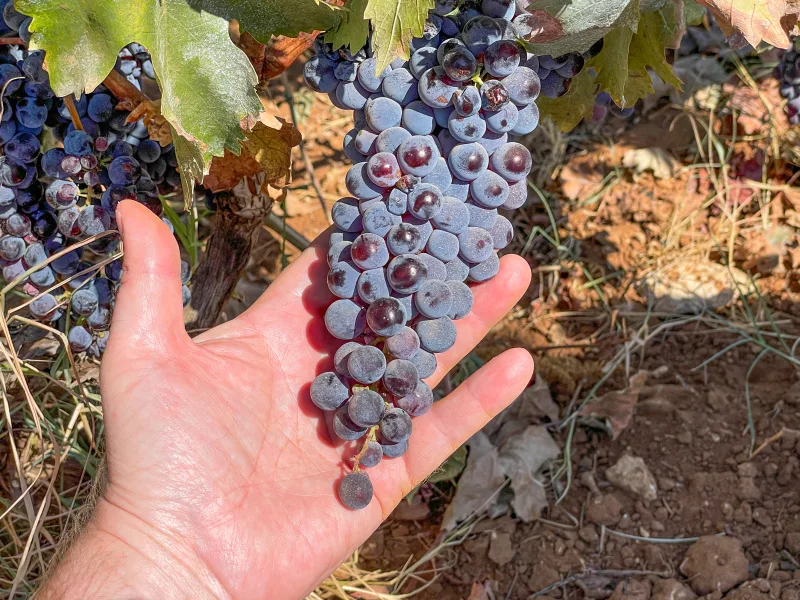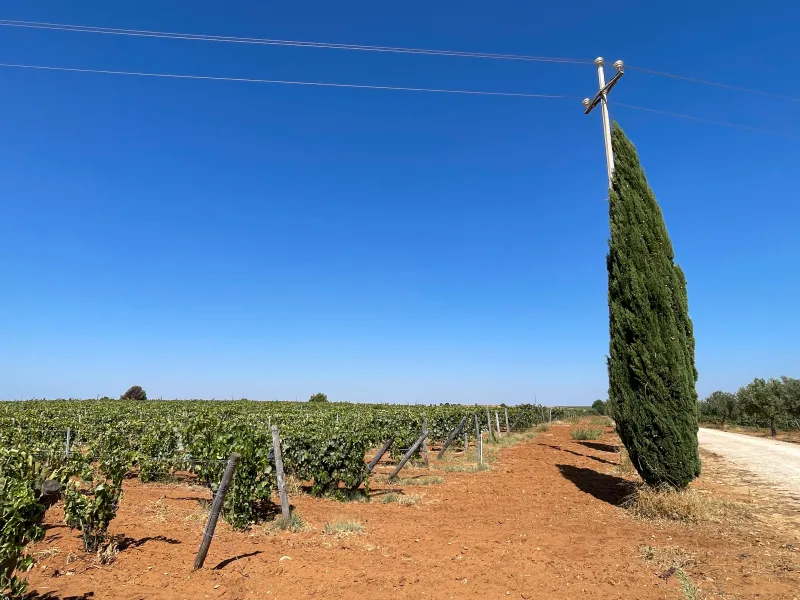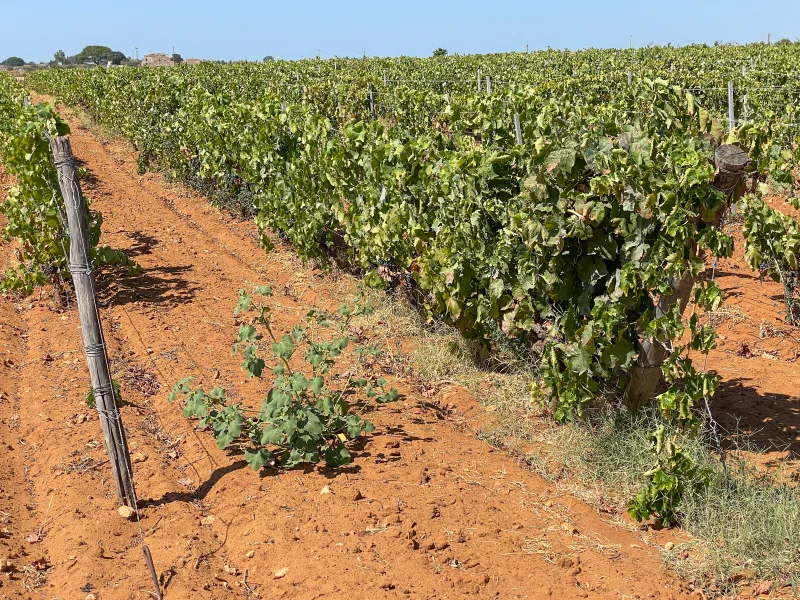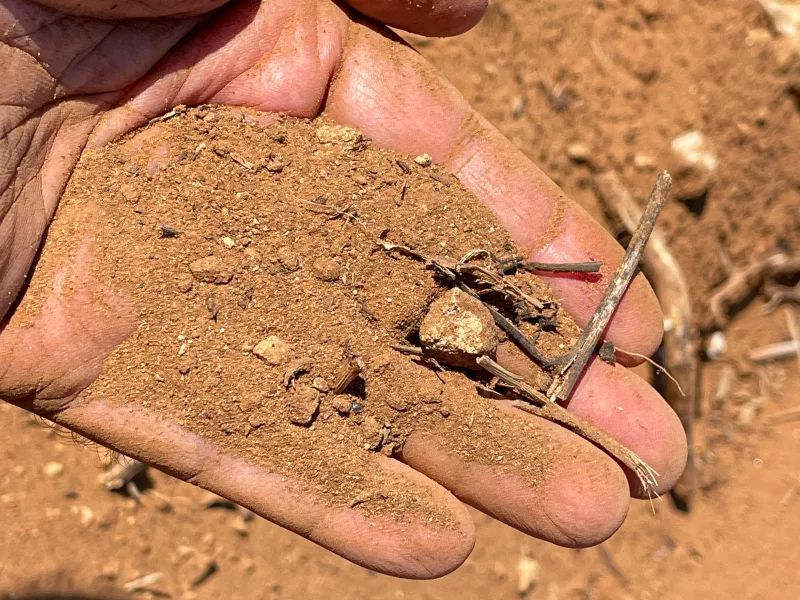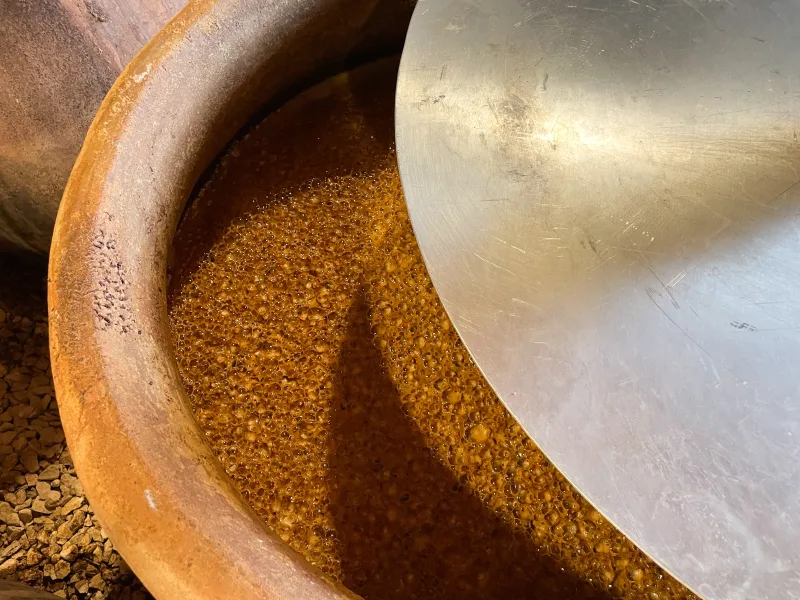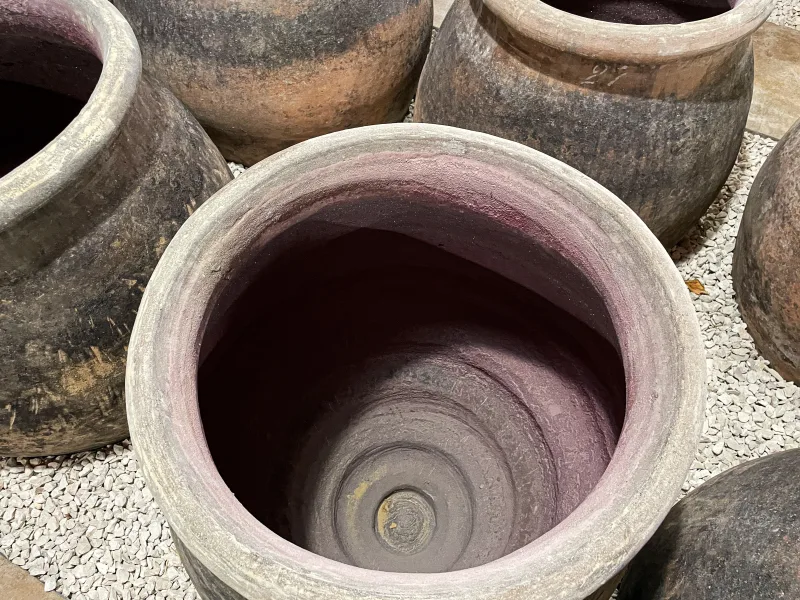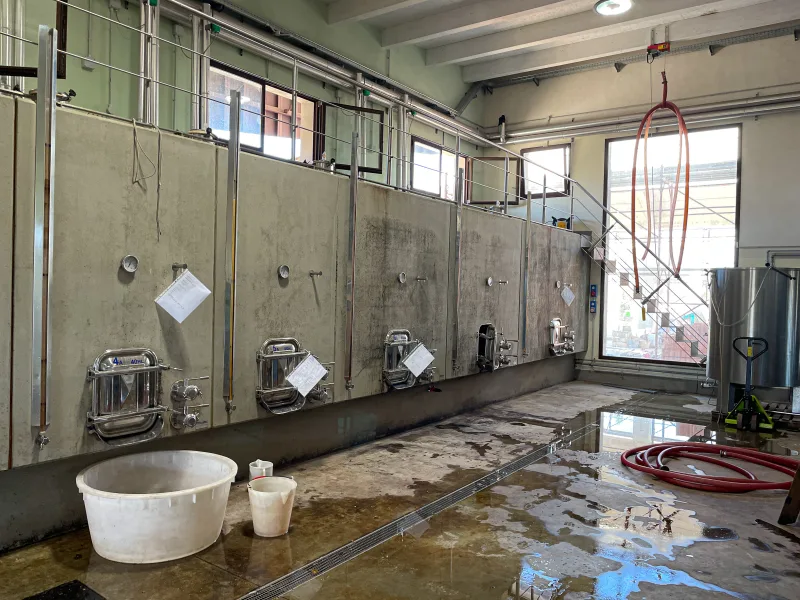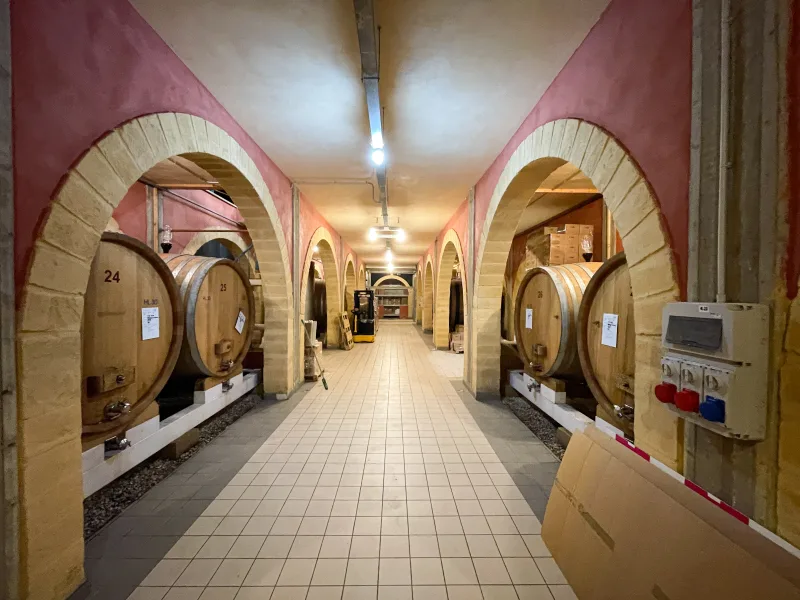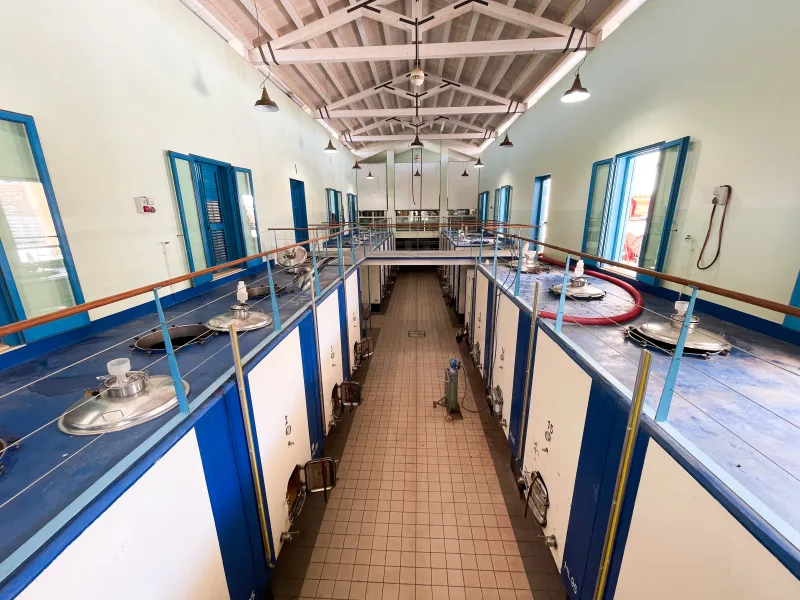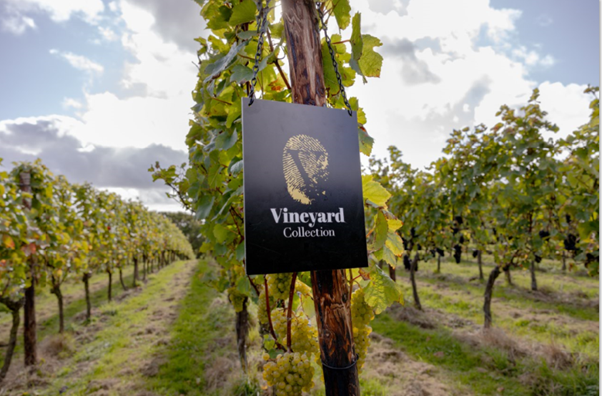Most wine lovers are fated to fall in love with far more wines and wineries than they will manage to visit in their lifetime. Even as someone who travels to wine regions several times per year, my mental list of vineyards I’d like to visit around the globe is already impossibly long, never mind that it continues to lengthen the more I drink.
There are times, however, when pilgrimages must be made, if only because you can’t truly understand a wine without standing in the dirt that grows it. Of course, there is so much to be gained from visiting the wineries we love, not least the pleasure of getting to know the people and the culture behind it.
Upon receiving an invite to visit Etna again this past fall, I knew I couldn’t go to Sicily for a second time without paying a visit to one of my favorite wineries in the world, Azienda Agricola COS. So I tacked a couple of days onto the front of my trip to Etna, rented a car, and drove down to Vittoria on the southern tip of Sicily.
COS was started by three high school friends, Giambattista Cilia, Giusto Occhipinti, and Cirino Strano, who needed something to occupy their time before beginning their first year at university. Cilia had recently been informed that his father was giving him an old ruin of a winery and a small plot of old vines as an early inheritance. So the three decided to see what they might be able to do with it.
“We were students, and we didn’t know anything about agriculture,” says Giusto Occhipinti with a smile and a shrug.
For lack of a better idea, the 20-year-olds selected the first initial of each of their last names to create the acronym COS to name the winery. And for the lack of knowing any better, they muddled their way through their first harvest in 1980 making wine in what seemed like the right way to them, without any additions, temperature control, or interventions of any kind. Today we’d call that Natural Winemaking, with deliberately capital letters, but for these three friends, it was simply a combination of pragmatism (just an old cement vat to work with) and a vague notion of tradition.
Encouraged by the reception to their first efforts, they persisted through their college years, though Strano would eventually peel off from the partnership to pursue his dream of becoming a doctor. Cilia and Occhipinti, both trained as architects, stuck with it, and 44 years later, are still going strong.
Flavors of a Bounteous Land
Any visitor to Vittoria can’t help but notice the staggering numbers of greenhouses dotting the landscape. Ranging from shiny and new to decrepit and abandoned, it’s hard to find a point in the province where you don’t have one in view.
In fact, Vittoria is one of the most significant agricultural areas in Italy, and in all of Europe, supplying a significant percentage of the continent’s tomatoes, eggplants, and peppers. Even having declined from its former heights of productivity, the Vittoria Market is the single largest commercial outlet for tomatoes in Europe.
Famously sandy and red, the topsoils of Vittoria are made of decomposed volcanic sediments. As distinctive as these soils are, they are but a thin veneer (sometimes as little as 10 inches) atop much deeper layers of limestone, which speckles the surface in small pebbles and chunks, gleaming white amidst the rusty lanes between the vines.
This limestone formed at the bottom of shallow seas between 6 and 20 million years ago and was then uplifted, as was the entire island of Sicily, when the African plate collided with the European plate about 5 million years ago. The collision and the subsequent subduction of the African plate underneath the European plate cracked the earth’s crust, allowing the magma to rise, both pushing the island higher and breaking through the surface to form Mount Etna.
Few things better characterize the qualities of Vittorian wine than this ancient and evolving interplay between sea and fire, a dynamic that has been millions of years in the making but continues to play out today. With roots sunk deep into the ancient seabed, the vines are buffeted by salty sea breezes that sweep across the Mediterranean from Tunisia, a mere 100 miles to the west. To the north, within easy view on a clear day, Etna periodically spews ash and fire. The sun beats down upon the weathered ridges formed from the ancient techtonic collision, which slowly crumble under sun, wind, and (increasingly scarce) rain to renew the sandy skin atop the deep calcaereous bedrock.
Working With and Making History
Sicily’s winemaking traditions can be traced back to the earliest civilizations of the Mediterranean. While the traditionally accepted timeframe for the rise of winemaking in the area is around 1200 to 1400 BCE, an archeological find in 2017 indicates that wine might have been made on the island as far back as 4000 BCE.
Around that time, neolithic cultures were beginning to transition to more settled civilizations such as the Proto-Sicanians and Minoans. These would be followed by the Greeks, Phoenecians, Carthaginians, and then the Romans, each of which expanded and improved viticulture on the island, turning the island into a powerhouse of wine production.
Sicily would eventually supply vast quantities of wine to a thirsty Europe, peaking first in the 14th Century and then again in the 19th Century when phylloxera ravaged the vineyards of Europe. During the worst of that crisis, a significant portion of European red wine, including Bordeaux, was bolstered with Sicilian wine.
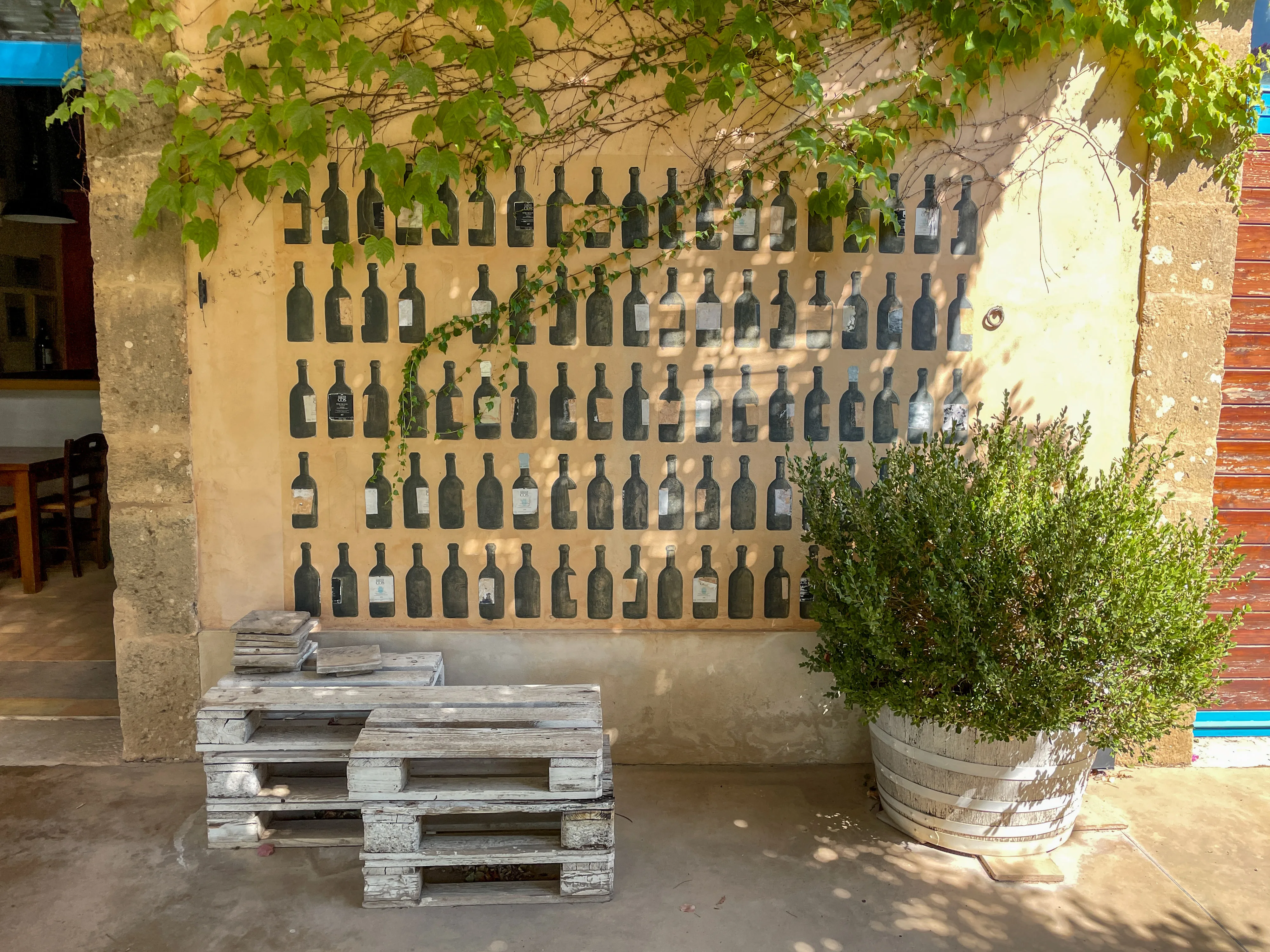
In 1607, under the authorization of King Filippo III of Spain, who ruled the region at that time, Countess Modica Vittoria Colonna Enriquez was permitted to found the city of Vittoria on the ancient site of the Greek city Kamarina. The Countess made it known that grape growing was high among her priorities by offering one extra plot of land to any farmer who planted another with grapes. By 1638, there were purportedly 2 million hectares of vineyards in the region.
Written records suggest that even during the time of Countess Enriquez, the grape Frappato played an important role in local viticulture. Most experts agree that Frappato is native to southeastern Sicily, where it has been blended with Nero d’Avola (thought to have been brought to the island by the Greeks). Referred to as Cerasuolo di Vittoria, this unique blend appears in historical references dating back to sometime in the 17th century. I have been trying to hunt down the first written reference to both the blend of grapes and the proper name Cerasuolo di Vittoria, but so far it has eluded me.
Like most of Sicily, Vittoria would fall prey to phylloxera in the 1890s, and wouldn’t begin to recover until the 1960s. The Sixties and early Seventies were marked by the establishment of Italy’s first DOCs (Denominaziones di Origine Controllata) and Cerasuolo di Vittoria was granted DOC status in 1973.
Nonetheless, by the time Occhipinti and his friends began in 1980, they knew of only a single producer making Cerasuolo di Vittoria. As curious students of history, and given the fact that they owned an old vineyard planted with both Nero d’Avola and Frappato, they naturally arrived at the idea of producing one of their own.
It would not be hyperbole to suggest that more than any other producer, COS has been responsible for bringing this wine back from the brink of extinction. Thanks largely to the success of COS and the other wineries who followed in their footsteps (plus some hard work by Cilia lobbying for the designation) Cerasuolo di Vittoria was elevated to DOCG status in 2005 and remains the first and only DOCG appellation in Sicily.
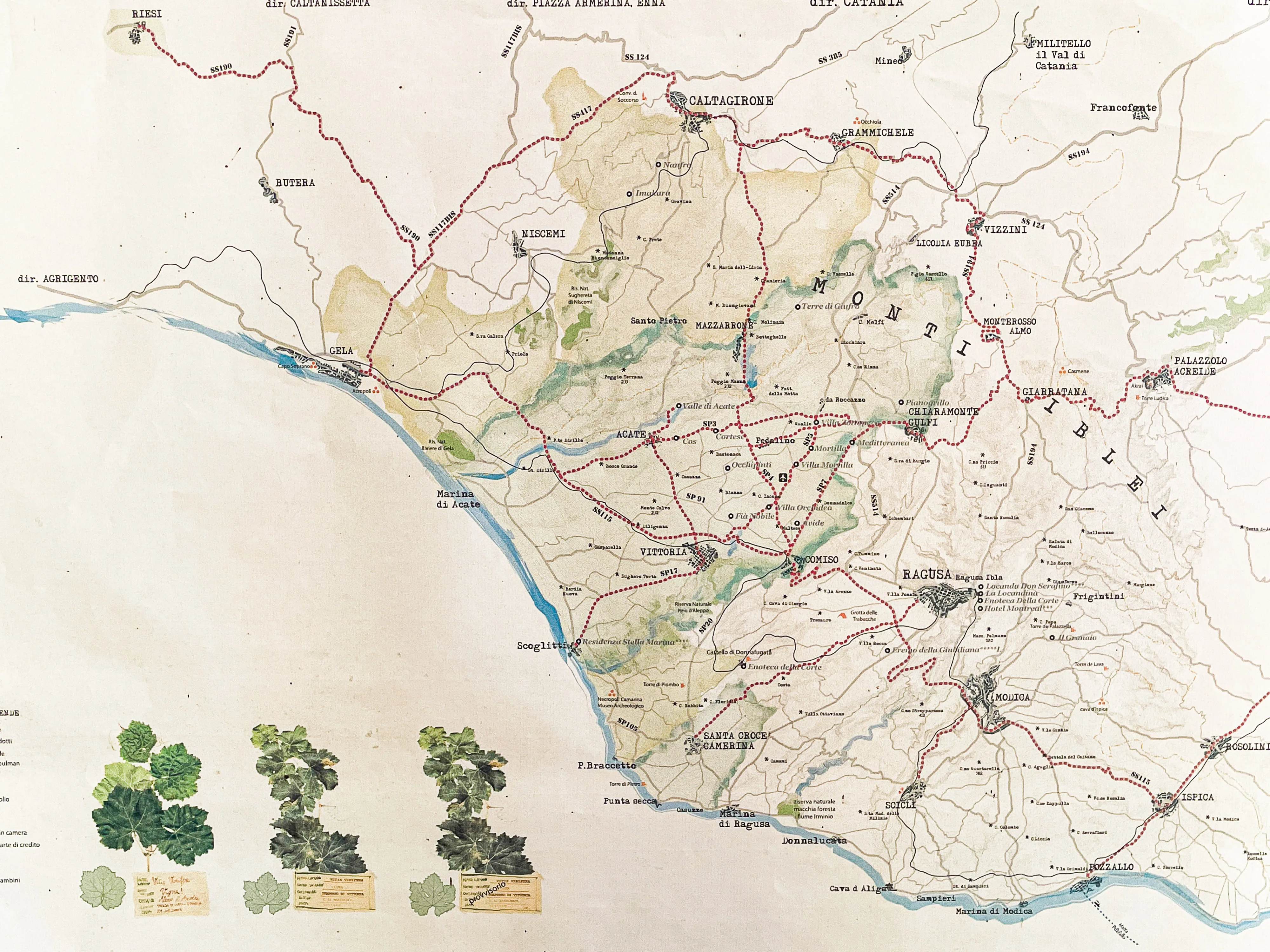
The Cerasuolo di Vittoria region of Sicily has two zones, one nested within the other. The wider, tan area shown on the map above is the larger of the two representing the limits for production of the wine. The olive-colored Cerasuolo di Vittoria Classico region sits within the greater whole, designating primarily the valley between the towns of Acate and Vittoria (plus a little chunk surrounding Santa Croce Camerina) as the classic region of production for the wine. In these regions, approximately 255 hectares of vineyards are planted.
Cerasuolo di Vittoria (regular or Classico) must be a blend of Frappato and Nero d’Avola consisting of at least 30% but no more than 50% Frappato with a minimum of 12.5% alcohol. The only difference in production regulations between the two lies in the longer aging requirements for the Classico designation—18 months versus a standard 8 months.
COS remains one of the most well-known, and among the very highest quality producers of Cerasuolo di Vittoria, but as much as the winery anchors and celebrates this traditional wine of the area, it has long since transcended it from a winemaking perspective.
Pioneers in Pithos
The early days of COS winemaking involved a lot of experimentation, with Occhipinti and Cilia experimenting with every kind of fermentation and aging vessel you can imagine—steel, concrete, and many sizes of oak in various states of newness. Fermentation methods were also up for consideration, and when the friends decided to make their first white wine in 1991, they opted to process it much like their red wines, allowing skin contact to translate into a more textured, darker-colored white wine that today we’d call an orange wine.
“In 1991, when you talk about macerating white wines?” Occhipinti laughs. “People thought we were crazy.” But the COS guys stuck to their guns and made white wines the way they wanted to, in an era before most people had ever heard of orange wines.
After experimenting a bit with red wine fermentations, Occipinti settled on a technique he calls “the sandwich:” a layer of whole clusters, a layer of destemmed whole berries, and a layer of whole clusters. Fermented with native yeasts, and with soft pumpovers to keep things moist, this approach delivers a gentle extraction capable of coaxing delicacy out of fruit born in the intensity of Vittoria’s sun, sea, and sandy soils.
Even as he honed his approach to winemaking, it became apparent to Occhipinti that new French oak barrels were not the way to express what Vittoria had to offer, and he began to explore alternatives. In the course of his research, Occhipinti came across the talhas of Portugal, the tinajas of Spain, and the qvevri of Georgia, eventually settling on the latter as the model for what he believed would be the most transparent way to convey the qualities of this particular corner of Sicily.
In 2000 COS debuted their Pithos wines, named after the Greek word for amphora. The Pithos Rosso is essentially a Cerasuolo di Vittoria fermented and aged in amphora, and the winery makes two whites in amphorae as well.
Originally buried to their necks in Georgian style, Occhipinti has recently partially raised the amphorae, exploring whether the temperature differential between the buried and exposed portions of the vessels can improve fermentation dynamics.
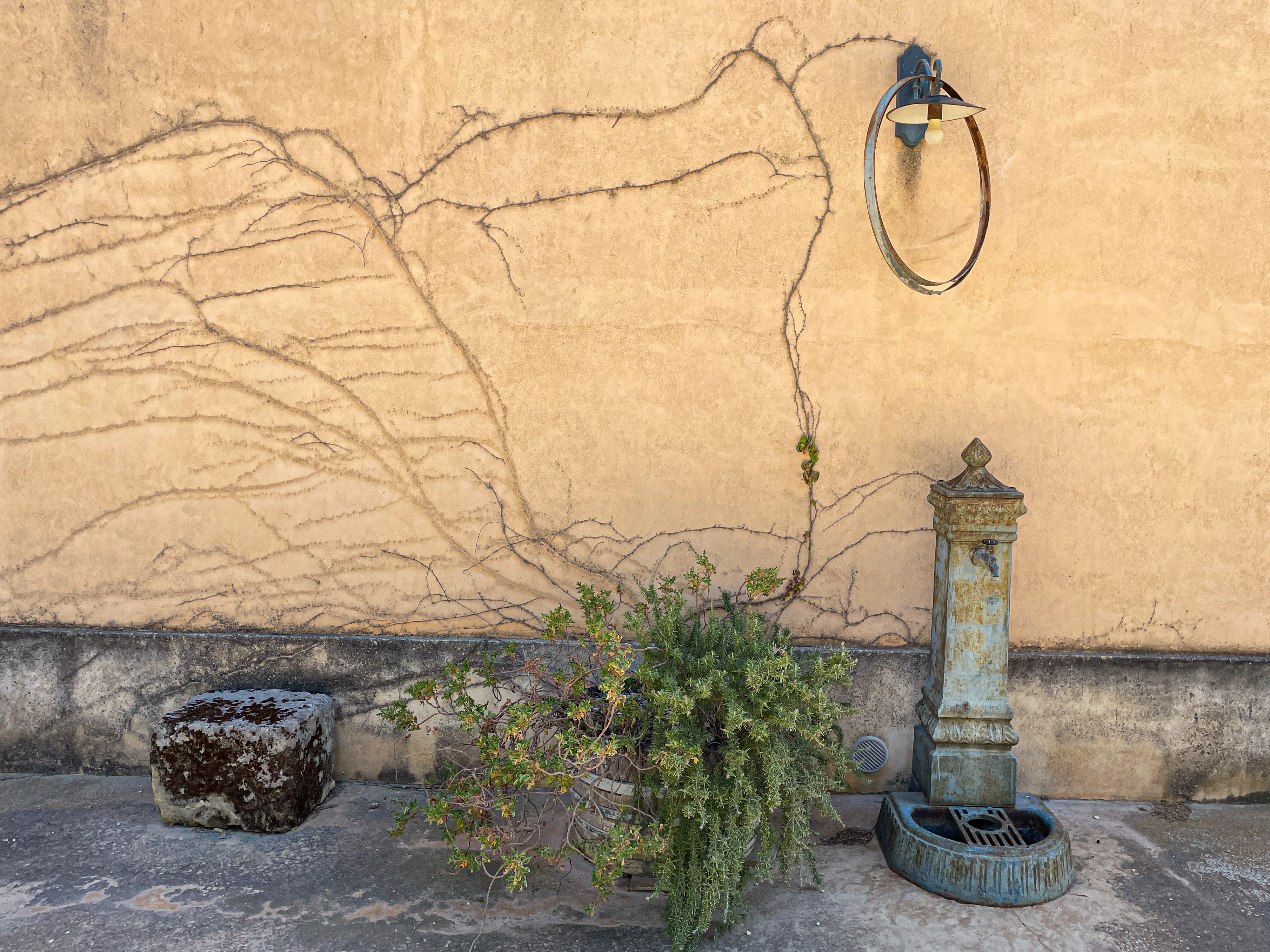
Today the winery uses a combination of 150 terra cotta amphorae, large concrete tanks, and large-format oak barrels for fermentation and aging (with some steel tanks for blending purposes).
After a visit to Haut-Brion more than a decade ago, Occhipinti was inspired to move from fermenting his two red grape varieties separately to full cofermentation.
“When we began [in 1980] there was a 10-day difference between the ripening of Nero [d’Avola] and Frappato,” says Occhipinti, “but now with climate change, they are much closer. With the cofermentation, we get more perfume and more harmony. Lots of wineries blend wines, but blending the grapes is more interesting.”
In addition to aromatics and balance, Occhipinti says, the naturally lower pH of Nero d’Avola makes the overall fermentation less susceptible to bacteriological issues.
Organic By Default, Biodynamic by Trial
The old vineyard Cilia got from his father had, by their reckoning, never seen a drop of chemical fertilizer, herbicide, or pesticide, given the fact that the last time anyone had paid much attention to the old vines was before such things were invented.
That was just fine from the standpoint of the founders. They had no intention of ever using such substances in their vineyards, and never have. Their 99 acres (40 ha) of vineyards were certified organic in 1998, but a few years before that, they had begun exploring the principles of biodynamics, which they now apply according to their own sensibilities, making some of their own teas, and some buying other preparations.
For Occhipinti and Cilia, the choice to farm and make wine biodynamically is about providing the most unadulterated version of their home terroir as possible.
“We don’t want to change the wine,” says Occhipinti. “We want to tell the story of the weather, the season, and the place.”
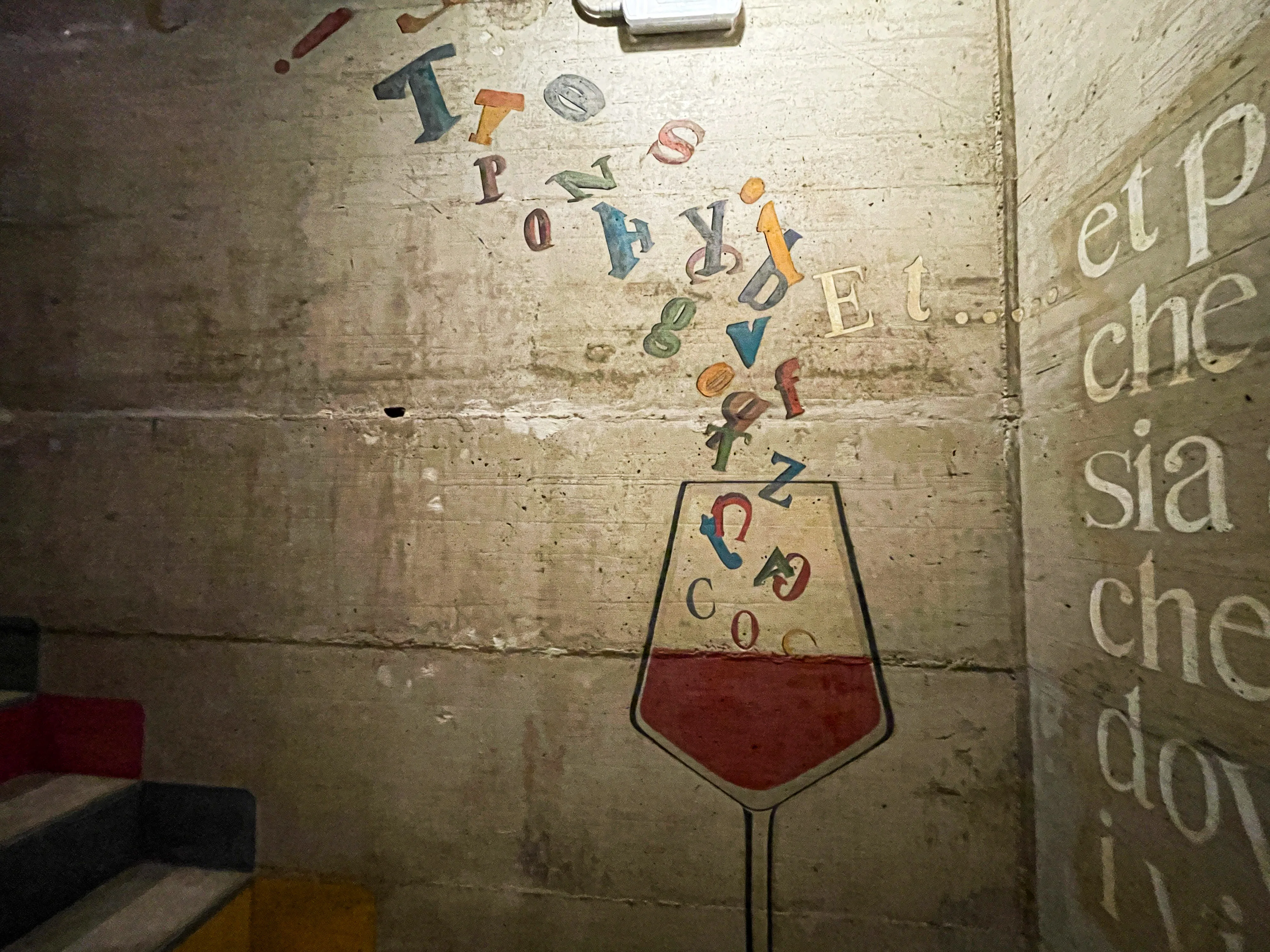
In this age of climate chaos, however, that is proving to be a greater challenge every year. Whether it is punishing heat or downy mildew, harvest isn’t getting any easier in Vittoria. The heat, in particular, has become such a problem that it sometimes makes it difficult for producers to meet the regulations of the appellation.
For the longest time, Cerasuolo di Vittoria required a minimum alcohol of 13%. With ever-increasing heat, producers are finding that their grapevines are shutting down, which halts ripening. Producers are more and more often forced to harvest at lower alcohols or end up with raisins. Yet at lower alcohols, producers were forced to declassify their Cerasuolos di Vittoria as a plain Sicilian red wine (Terre Siciliane Rosso), as COS was forced to do with its normal Cerasuolo in 2019. Thankfully, says Occhipinti, the authorities have been responsive to grower demands, and in 2020 the minimum was reduced to 12.5%.
Congregation of Stone
It took me some time before I learned the origin of the name COS. Before I did, I toyed with various ideas for what the acronym might stand for, but the “s,” more often than not, ended up standing for stone in my imagination. I’ve long admired the stony quality of COS wines, both white and red, which is a textural combination of minerality, powdery, supple tannins, and saline acidity.
But beyond this sense of having been partially carved from rock, the COS wines possess what I can only describe as an honesty that proves equal parts disarming and alluring. When you drink COS wines there’s never a sense that you are having to taste your way through any layers of artifice or cosmetics before you arrive at the essence of what the wine has to offer. This is, yes, a sense of purity, but more than that, a sense of being true to a place and time, a bottling of unvarnished circumstance.
I adore the wines of COS, and always have, not just for their integrity, but also because they have always managed to pull off the trick of being simultaneously sophisticated and humble. These are not expensive wines, and I believe that is by deliberate choice. Occhipinti and Cilia have achieved enough reknown to sell any number of 200 Euro bottles they chose to produce, but to my knowledge they’ve never approached the idea of making a luxury wine, and I don’t get the sense that they have any interest in doing so. Nonetheless, the level of refinement and sheer pleasure you can usually find in one of their adorably squat bottles never fails to impress.
These are wines born from friendship and generously offered with the same unpretentious amity to all who pull their corks.
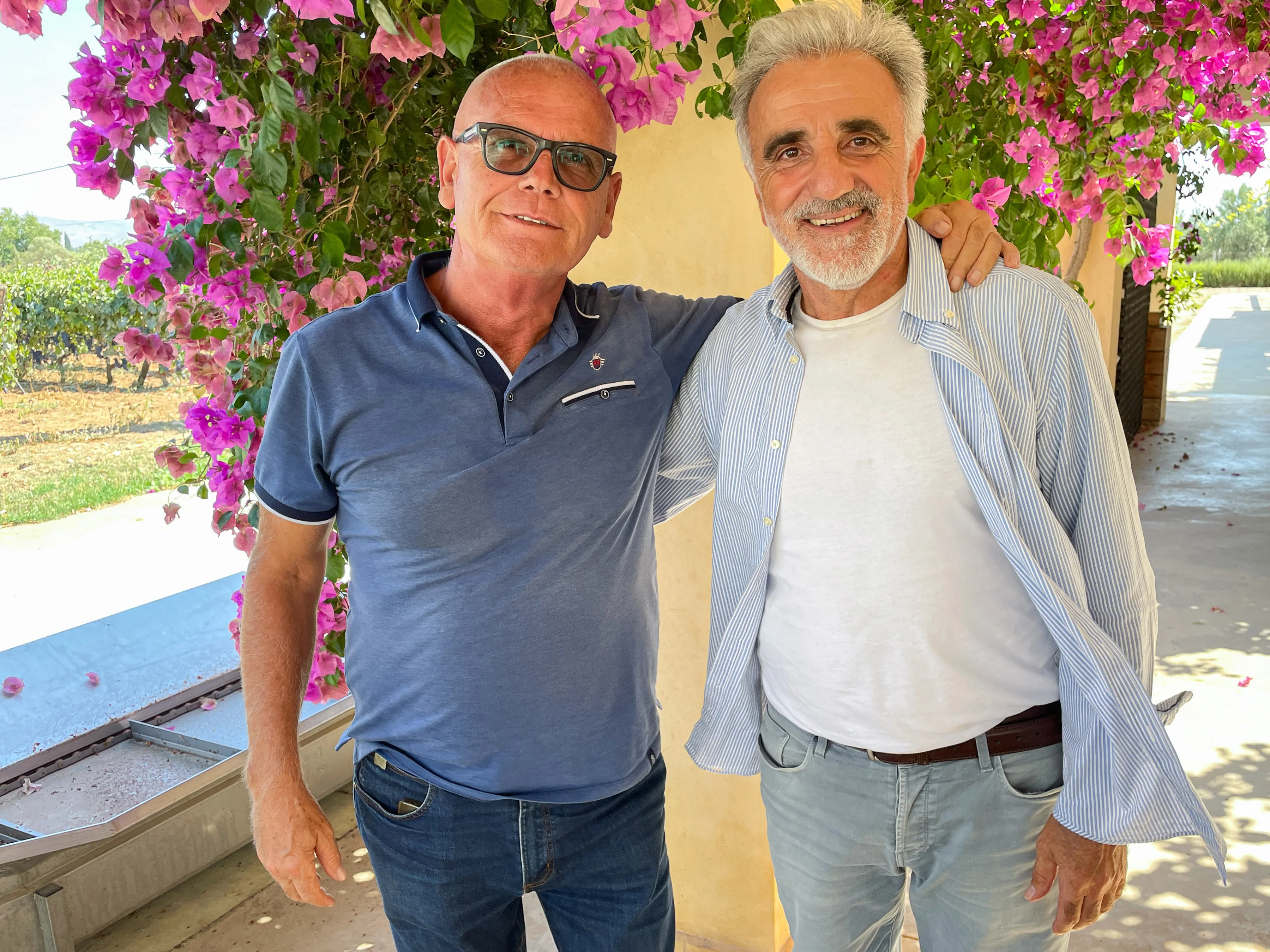
Tasting Notes

2020 COS “Methodo Classico – Dossaggio Zero” Extra Brut Rosé of Frappato, Terre Siciliane, Sicily, Italy
Light amber in color with copper highlights and very fine bubbles, this wine smells of orange peel and herbs. In the mouth, sour cherry, orange peel, herbs, and kumquats have a juicy brightness and a soft mousse. Kumquat lingers in the finish. Zero sulfur added. A pretty, fun wine. 12% alcohol. 4000 bottles produced. Score: around 9. Cost: $55. click to buy.
2022 COS “Pithos Bianco” Grechanico, Terre Siciliano Blanco, Sicily, Italy
Light amber in the glass, this wine smells of orange peel, white flowers, and wet chalkboard. In the mouth, powdery tannins coat the mouth, with flavors of citrus pith, wet chalkboard, bee pollen, and notes of orange peel in the finish. Utterly delicious. One of my favorite white wines. 100% Grechanico destemmed and fermented in amphora. 12% alcohol. Score: around 9.5. Cost: $39. click to buy.
2022 COS “Rami” Terre Siciliano Blanco, Sicily, Italy
Light amber in the glass, this wine smells of orange peel, white flowers, and citrus pith. In the mouth, a light grippy texture surrounds deeply mineral flavors of lemon peel, citrus pith, wet chalkboard, and yellow plums. Great acidity. A blend of 50% Grillo and 50% Inzolia. Grapes are chilled and then skin macerated for one week and then allowed to warm up. When fermentation begins, the wine is pressed into concrete vats to finish fermentation. 12.5% alcohol. Score: between 9 and 9.5. Cost: $32. click to buy.
2022 COS “Zibibbo In Pithos” Zibibbo, Terre Siciliano Blanco, Sicily, Italy
Pale amber in the glass, this wine smells of white flowers and melon. In the mouth, bright citrus pith, orange flesh melon, white flowers linger with wet chalkboard minerality. Softer acidity. Destemmed berries are skin-macerated and fermented in amphora. 11% alcohol. Score: around 9. Cost: $34. click to buy.
2022 COS Frappato, Terre Siciliane, Sicily, Italy
Medium garnet in the glass, this wine smells of cherry, bramble, and herbs. In the mouth, lightly grippy tannins wrap around a core of dried and fresh herbs, and earth. Long finish. Fermented and aged in cement. 20% whole cluster. 12.5% alcohol. Score: between 8.5 and 9. Cost: $30. click to buy.
2021 COS “Pithos Rosso” Red Blend, Terre Siciliane Rosso, Sicily, Italy
Medium ruby with a faint haze, this wine smells of sweet cherry, aromatic herbs, and flowers. In the mouth, gorgeous berry and cherry flavors mix with citrus peel, green herbs, redcurrant, and a hint of dusty roads. Faint grippy tannins. 100% destemmed, fermented and then left for 7 months of skin contact in amphora. A blend of roughly 60% Nero d’Avola and 40% Frappato. 12% alcohol. Score: between 9 and 9.5. Cost: $37. click to buy.

2021 COS Cerasuolo di Vittoria Classico, Sicily, Italy
Medium garnet in the glass, this wine smells of red berries, dried herbs, and wet pavement. In the mouth, muscular, fine-grained tannins surround sour cherry, green herbs, and dried flowers. Great acidity. A blend of grapes across all the sites that COS farms. This is the 44th harvest season with this label. A blend of 40% Frappato, 60% Nero d’Avola. 12.5% alcohol. Score: around 9. Cost: $35. click to buy.
2019 COS “Della Bastonaca” Cerasuolo di Vittoria Classico, Sicily, Italy
Light to medium garnet in the glass, this wine smells of dried flowers, black cherry, and herbs. In the mouth, citrus peel, dried flowers, and berry flavors have a deeply stony, wet-chalkboard minerality, and a lovely lingering perfume that mixes floral notes and earth. Beautiful, fantastic acidity. A blend of 40% Frappato and 60% Nero d’Avola from 50- to 70-year-old vines in a single plot of iron-rich sandy soils, the original vineyard that the COS partnership began working with. 13% alcohol. Score: around 9.5. Cost: $52. click to buy.
2019 COS “Contrada” Nero d’Avola, Terre Siciliane Rosso, Sicily, Italy
Light to medium garnet in the glass, this wine smells of cherry, orange peel, and herbs. In the mouth, a mix of sour cherry, citrus peel, dried herbs, lavender, and earth are wrapped in a fleecy blanket of tannins. Great minerality and acidity. Delicious. Made from the oldest Nero d’Avola vines they own in the Bastonaca vineyard, with an average age of 50 years. 12% alcohol. Score: around 9.5. Cost: $59. click to buy.
2007 COS “Contrada” Nero d’Avola, Terre Siciliane Rosso, Sicily, Italy
Medium ruby and brick red in the glass, this wine smells of leather and bacon fat and dried herbs. In the mouth, saline flavors of leather, and herbs, and dried cherries, are wrapped in a leathery blanket of tannins. Acidity keeps the wine fresh and bright despite the age. Wonderful minerality. Made from the oldest Nero d’Avola vines they own in the Bastonaca vineyard, with an average age of 50 years 13% alcohol. Score: between 9 and 9.5. Cost: $43. click to buy.
2019 COS “Maldafrica” Red Blend, Sicily, Italy
Medium to dark garnet in the glass, this wine smells of cherry and garrigue. In the mouth, flavors of cherry and plum mix with dried herbs and aromatic green herbs. Excellent acidity. Deep minerality, with wet pavement lingering in the finish. Faint, powdery tannins. A field blend of roughly half Merlot and half Cabernet Sauvignon. 12.5% alcohol. Score: around 9. Cost: $20. click to buy.
The post The Wines of COS and the Soul of Vittoria, Sicily appeared first on Vinography.
This Article was originally published on Vinography

